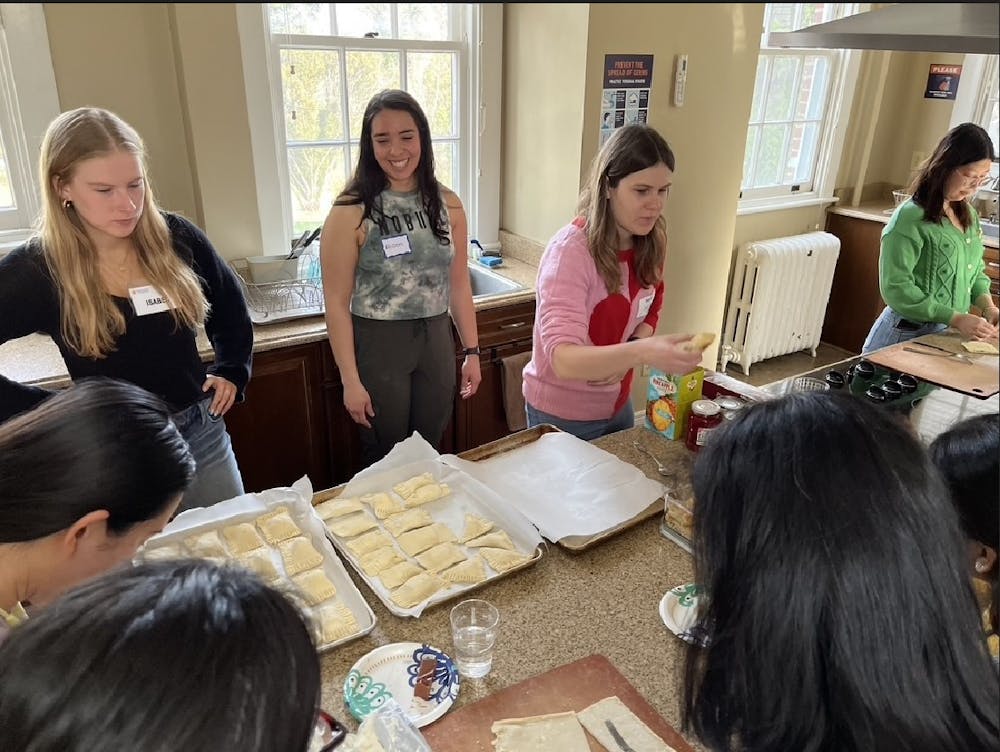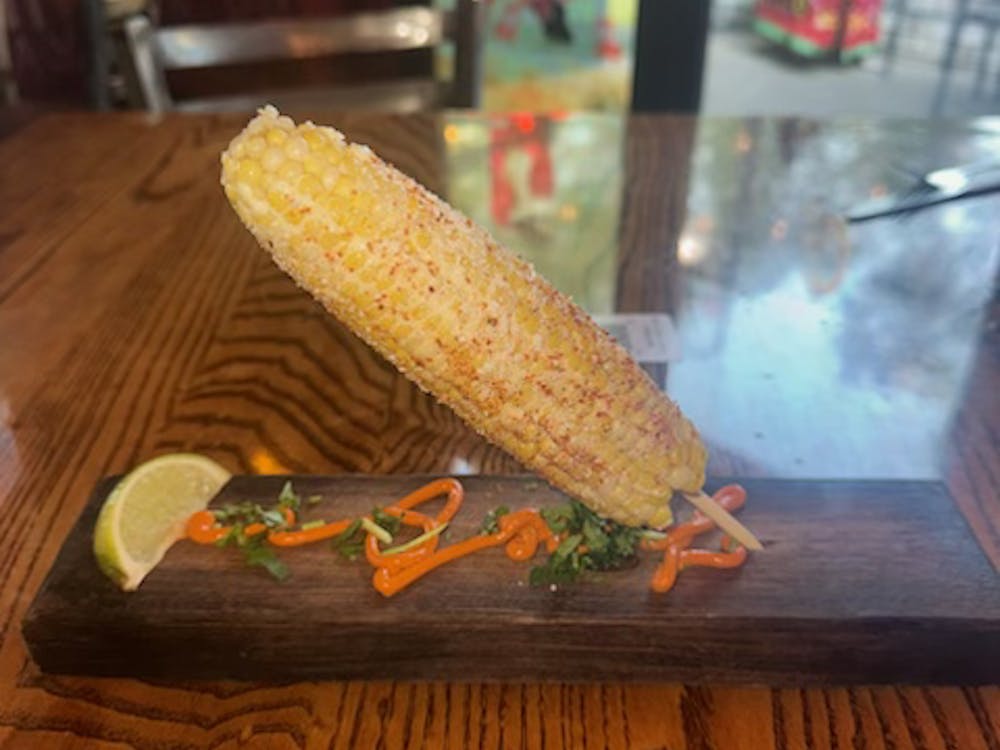With cool piña coladas in hand and warm, fragrant pastries fresh out of the oven — my Saturday morning at the International Center was full of delicious food and friendly community. This past weekend I led my first cooking class of about 15 participants through making virgin piña coladas and pastelitos — guava and cream cheese pastries. Since the cost of materials was covered by the center, and offered its on-site kitchen to host the class, volunteering to lead a cooking class was a simple and rewarding commitment.
Located at 21 University Circle — a 20-minute walk from Clark Library — the International Center is a hidden gem that welcomes all University students. Both domestic and international students are invited to attend events hosted by the center, which encourages engagement with different cultures and generates connections between students of different backgrounds.
One of my major passions is connecting to culture through food, so I jumped at the opportunity to share this experience with other students and members of the Charlottesville community. I was most looking forward to sharing dishes that connect me with my Cuban and Puerto Rican heritage. Although I felt nervous to lead a class, the exciting and welcoming atmosphere of the center helped soothe my nerves. As attendees trickled into the kitchen, the introductions and welcoming conversations flowed easily.
I chose two foolproof and delicious recipes from my Latin heritage to share with the class — pastelitos de guayaba and piña coladas. I grew up eating pastelitos and making guava pastries with my mom, so getting to share this nostalgic treat with others was extremely special. The guava paste is thick and sweet, so the addition of the cream cheese adds a savory complexity that balances the flavors of the pastry. While I learned to make these from my mom, the Preppy Kitchen provides a great recipe to follow.
We made the pastelitos first since they require more time in the oven. Each participant was given portions of puff pastry dough, guava paste and cream cheese. While I demonstrated how to make one, everyone was set free to be as creative as they desired with shaping their bite-sized pieces which resulted in some cute triangles, rectangles and dumpling-shaped pastries.
We all chatted as we prepared our pastries. I was excited to hear participants talking about how this pastry reminded them of others from different cultures. One participant was curious to learn more about how pastelitos tie with similar pastries, and another attendee who had already taught a cooking class on moon cakes gladly shared her positive experience leading a cooking class as well. Once the baking sheets were full of beautiful pastries, we popped them into the oven for 20-30 minutes and the waiting began.
While the pastelitos were in the oven, I blended up delicious non-alcoholic piña coladas for the class to enjoy while we waited. Piña coladas are made of coconut milk, frozen pineapple, pineapple juice, ice and white rum, with a maraschino cherry and slice of pineapple for garnish.
The piña colada is Puerto Rico’s national drink and was invented in 1954 by bartender Ramón Marrero at the Caribe Hilton hotel. While I was in Puerto Rico over winter break, my family visited the Caribe Hilton hotel in San Juan, which displays a plaque honoring the creation of this famous beverage. I chose to pair the pastelitos with piña coladas because I wanted to share recipes from both my Cuban and Puerto Rican backgrounds.
The cool and refreshing piña coladas and warm guava pastries complemented each other well.
For the drinks, I used a simple recipe I found online as a reference. Having learned plenty of my kitchen skills from my mom, I didn’t measure the ingredients and relied instead on taste and feel.
While we savored our freshly baked pastries, the participants and I brainstormed more cooking class recipe ideas, talking about how the blending of culture into fusion dishes provides an even greater opportunity to experience a variety of different foods.
Overall, I was grateful for the opportunity to lead this cooking class because it was a pleasant experience that ended up not being as nerve-racking as I’d anticipated. I love writing articles on foods and recipes from my cultural backgrounds and I realized the very essence of that comes back to human connection.
Teaching an in-person cooking class granted me the opportunity to connect with people of similar interest much more directly than through writing — and while both modes are rewarding in their own ways, the change of pace from writing to a social experience reminded me what I love about food in the first place.
Food has the ability to create so much joy and genuine connection and is a magnificent vehicle for learning about other cultures and recognizing similarities in the human experience. There was a great turnout of enthusiastic people at the cooking class and the friendly environment was so much fun to be part of.
The International Center would love to hear from more people interested in volunteering — it doesn’t have to be cooking related. Feel free to get in contact with the center with any volunteering questions or ideas in order to share parts of your own culture with the community.







